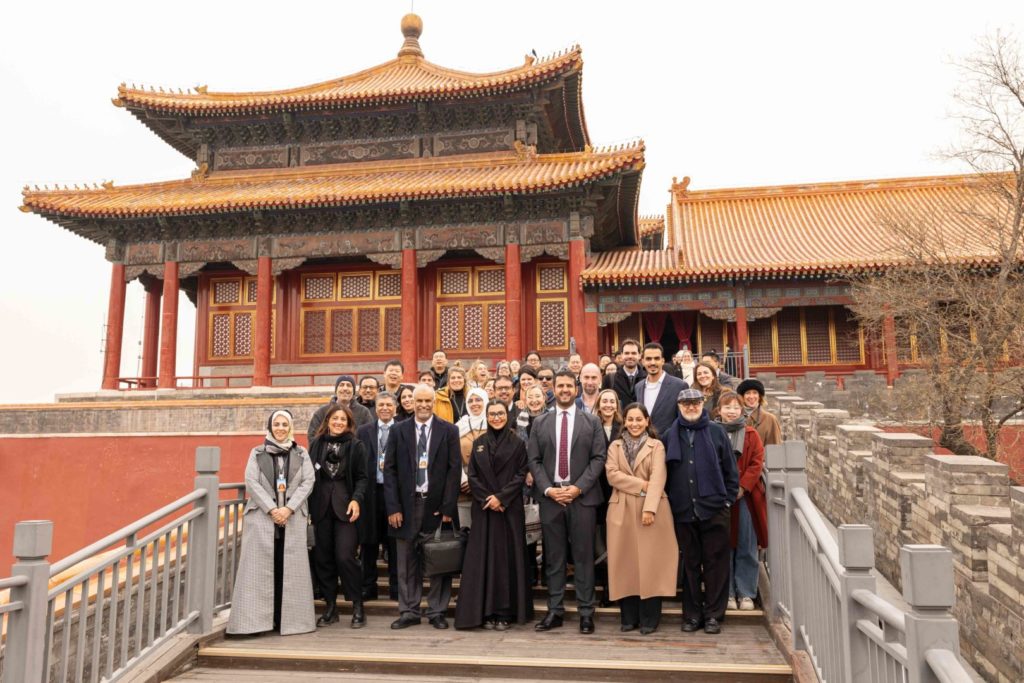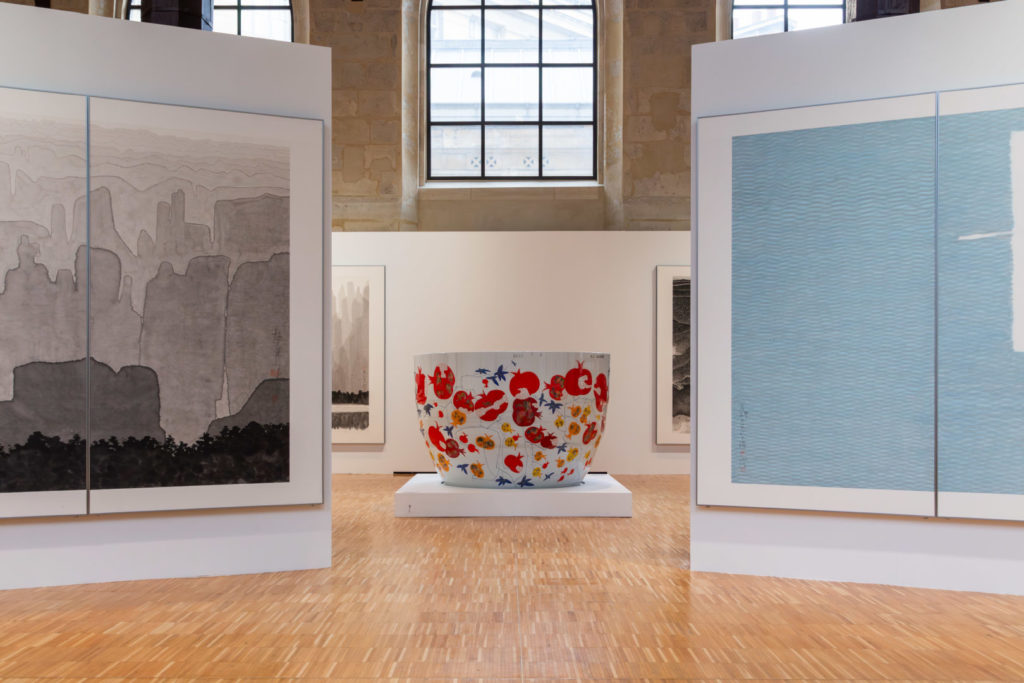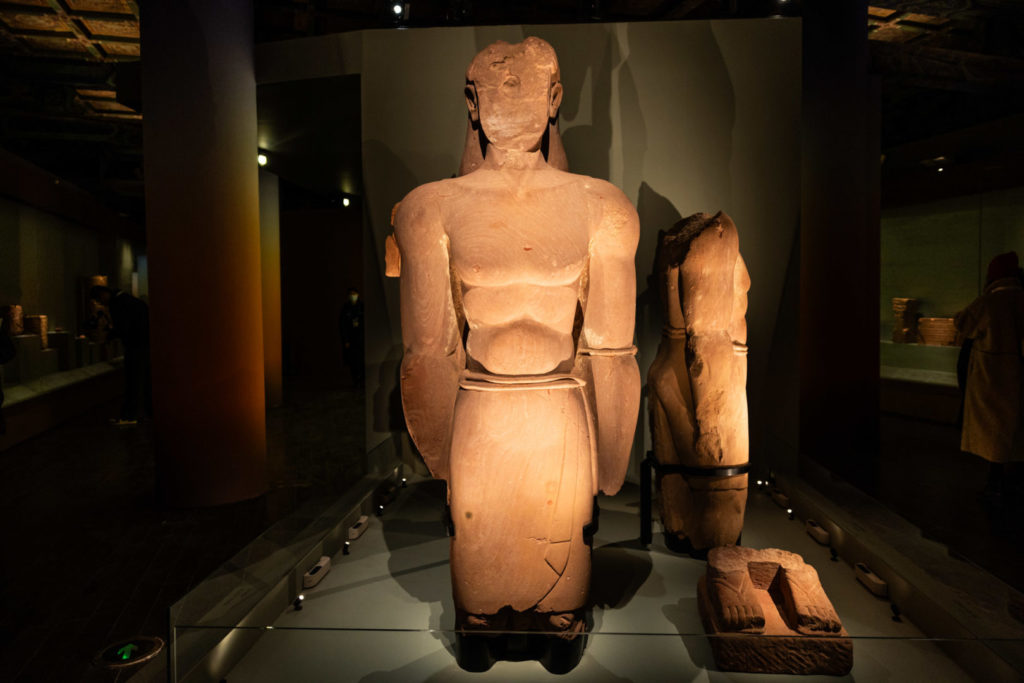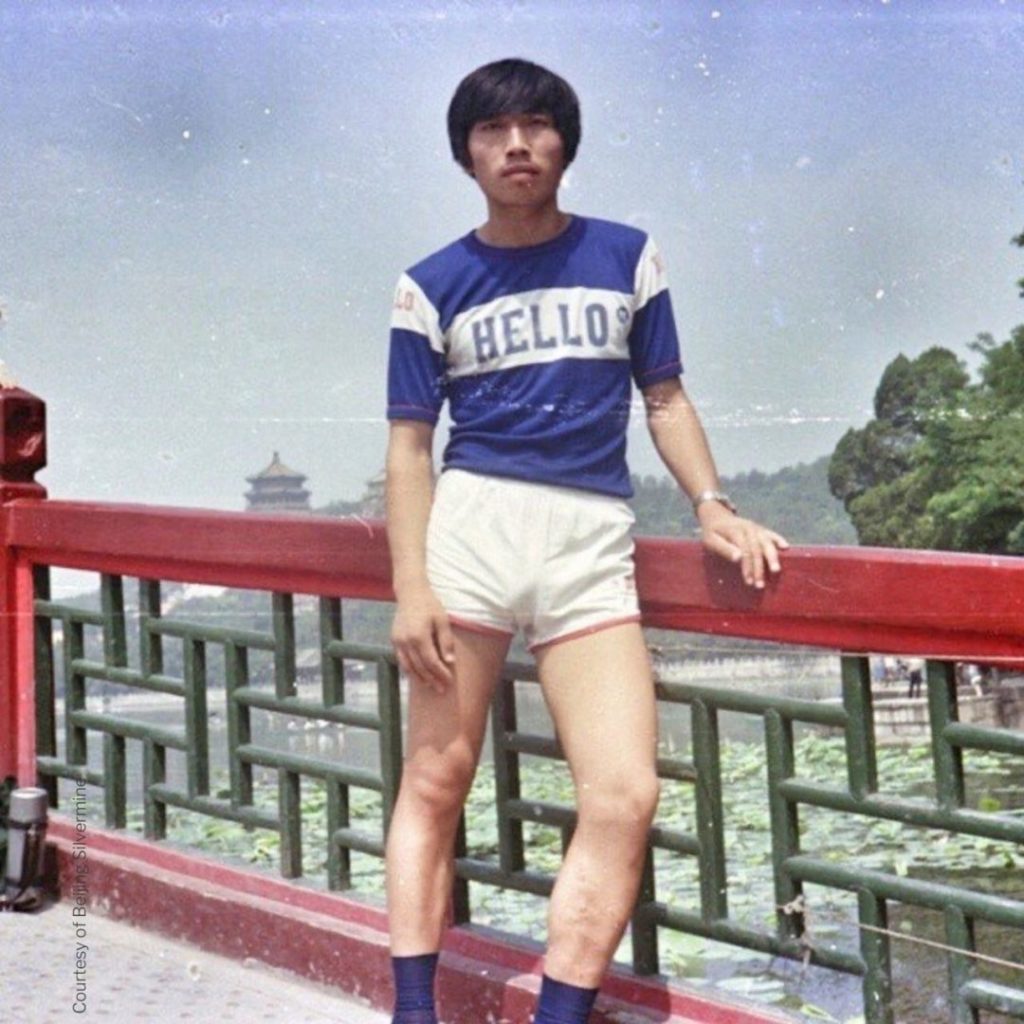Over two days, the Directors of the archaeological projects working at AlUla, as well as experts carrying out research at other major sites in the Kingdom of Saudi Arabia, presented an overview of the historical knowledge of AlUla and the Kingdom, some of whose treasures are being unveiled to the world for the very first time.
This event was a unique opportunity for the Chinese academic community to learn about the ongoing archaeological activity through a series of presentations, opening the door to future cooperation between the two countries in the field of archaeology and promoting exchanges between the ancient and rich cultures of Saudi Arabia and China.
Dr. Abdulrahman Alsuhaibani and Dr. Ingrid Périssé-Valéro
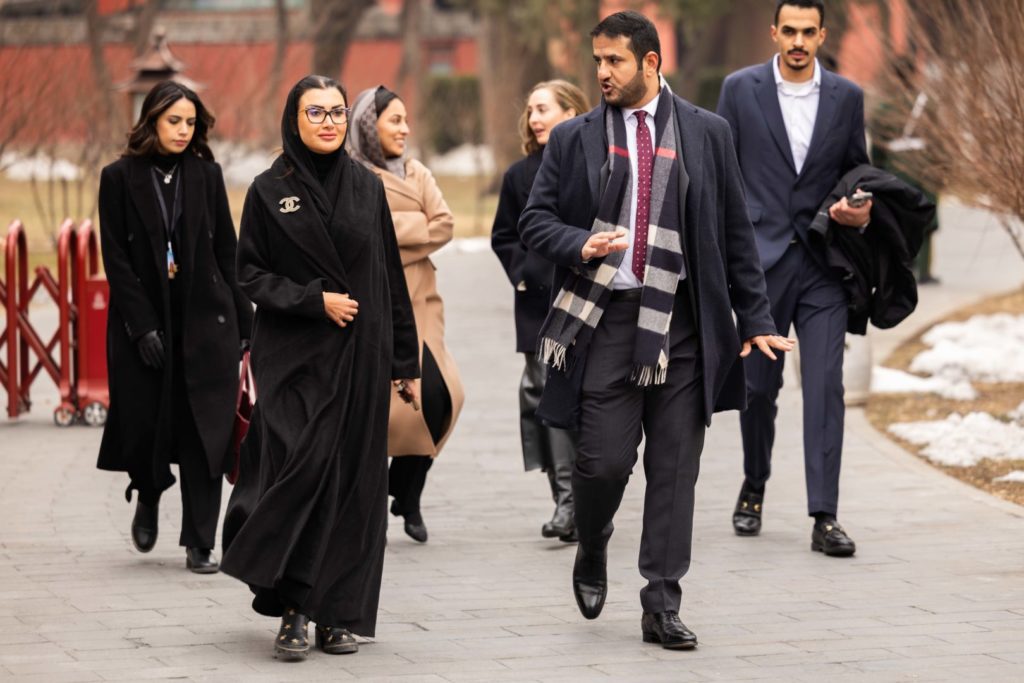
Speakers
Dr. Abdulrahman Alsuhaibani (Saudi)
Executive director of Archaeology, Collections and Conservation, Royal Commission for AlUla (since 2023)
Associate professor of Archaeology, King Saud University (since 2019)
Speech abstract
The Dadan Archaeological Project: results of four excavation and survey seasons at an ancient North-Arabian capital
Located in the oasis of modern al-ʿUlā, in northern Hejaz, the ancient city of Dadan was a major political and commercial hub in ancient northwest Arabia. It was settled from the late 3rd millennium BCE and flourished during the 1st millennium BCE with the development of long-distance trade along the ‘Incense Road’. In 2020, a new program, the Dadan Archaeological Project (CNRS/AFALULA/RCU), was launched to carry out a comprehensive archeological investigation of this major site. The first three field seasons already shed critical new light on the organization, chronology, political history, religious life, and material culture of this major site.
Education and Professional Experience
- PhD in Archaeology – Specialization in Ancient Architecture – Sorbonne University, Paris I Panthéon Sorbonne University. Thesis : Architecture in Dadan, an analytical and comparative study (in french).
- 2019 – Present: Co-director, Saudi-French Archaeological Project at the Dadan Archaeological Site (with Dr. J. Romer).
- 2019 – Present: Head and curator of the exhibition AlUla: Wonders Of Arabia ( France in 2019, China in 2024).
- 2022: Head of the Royal Commission for AlUla’s agreement with the Louvre Museum on loan of the Lihyanite statue.
- 2021: Curator of the exhibition of the Royal Commission for AlUla Agreement with UNESCO in Paris.
- 2021-2023: Acting Executive Director, Collections Depart., Royal Commission for AlUla.
- 2021- 2022: Part-time consultant, Tourism Authority, KSA.
- 2019-2021 : Director of Museums and Exhibitions Depart., Royal Commission for AlUla.
- 2019: Visiting Professor, Sorbonne University Abu Dhabi.
- 2018-2021: Vice Chairman, Board of Directors of the Saudi Society for Archaeological Studies.
- 2017-2018: Vice Dean, Faculty of Tourism and Archeology for Academic Affairs.
- 2016-2018: Director, Research Center at the Faculty of Tourism and Archeology.
- 2013–2019: Lecturer, then Assistant Professor, Department of Archaeology, King Saud University.
Publications (selection)
- Alsuhaibani A., 2023, “Dadan and Lihyan Kingdom or Two Kingdoms, A Critical Study through archaeological evidence, Jordanian Journal of History and Archeology 17, 1, 117-131.
- Alsuhaibani A., 2021, “Dadan (AlUla) and its symbolic significance during the first millennium BC”, Gulf Journal of History and Antiquities 16, 15-38.
- Alsuhaibani A. & Al-Theeb S., 2021, “New Dadanite inscription from AlUla”, Abgadiyat 16, 120 – 127.
- Alsuhaibani A., 2018, “Al-Jarha in the Light of Modern Archaeological Research”, Adumato 37, 53-62.
- Alsuhaibani A., 2017, “Building Technology at the Dadan Site”, Gulf Journal of History and Archaeology 12, 59-95.
- Alsuhaibani A. & Al-Hajj M., 2017, “ Semantic Dimensions of Decorative Simplicity in the Arts of the Dadan Archaeological Site (Al-Khuraibeh)”, Journal of the Faculty of Tourism and Archeology 29, 167-180.
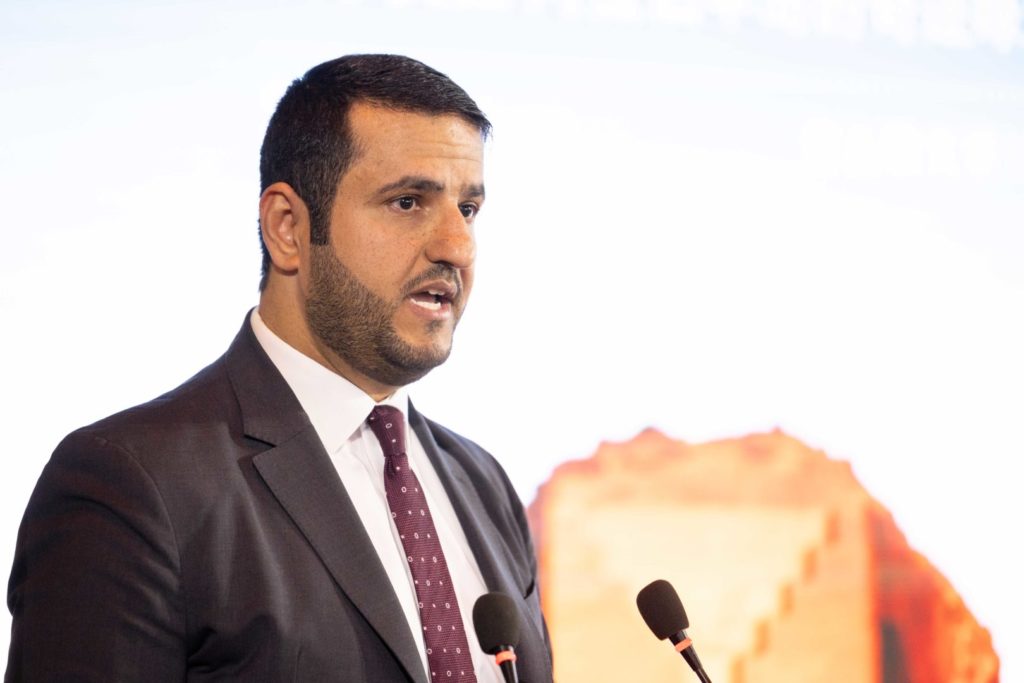
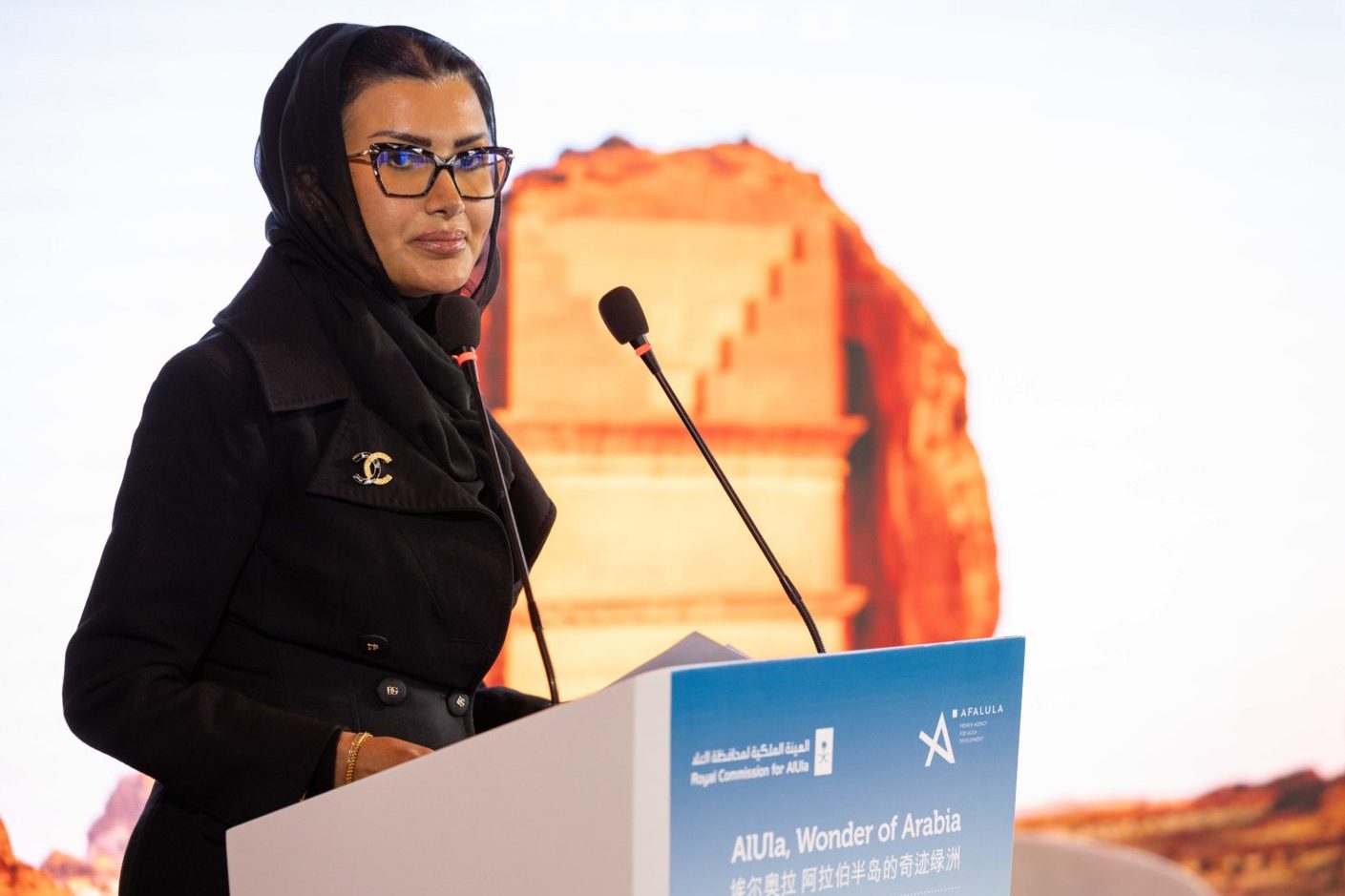
Abeer Al Akel (Saudi)
Acting CEO of Royal Commission for AlUla (since 2024)
Education and Professional Experience
- Program for Leadership Development (Harvard Business School) : 2022-2023
- BS Computer and Information Sciences (King Saud University) : 2007
- The Royal Commission for Alula, Acting CEO: 2024-present
- The Royal Commission for Alula, Chief of Special Initiatives and Partnerships: 2019-2024
- The Royal Commission for Alula, Head of Strategic Delivery : 2017-2019
- Head of vision realization office: 2017
- PwC: 2013-2016
- SABB: 2010-2013
Dr. Rebecca Foote (USA)
Director of Archaeology and Cultural Heritage Research, Royal Commission for AlUla
Education and Professional Experience
- PhD, Harvard University
- BA, University of Pennsylvania
- 2018 – present: Director, Archaeology and Cultural Heritage Research, Royal Commission for AlUla.
- 2017-108: Consultant, Cultural Heritage, Royal Commission for AlUla.
- 2009–2018: Head, Publications, Nasser D. Khalili Collection of Islamic Art, London, UK.
- 2008–2009: Senior Researcher, ‘Water, Life & Civilisation’ Project (Leverhulme Trust), University of Reading, Reading, UK.
- 2005–2007: Senior Research Fellow, Aga Khan Program, Harvard University, Cambridge, MA, USA.
- 2006: Senior Research Fellow, National Endowment for the Humanities, American Center for Oriental Research (ACOR), Amman, Jordan.
- 2000-2005: Director, The Islamic Art Society (IAS), London, UK.
- 1993–2008: Co-Director, Humayma Excavation Project, Humayma, Jordan.
Publications (selection)
- Foote R. , Tuttle C. , Quartermaine J., Morabito L., Thomas H. & Kennedy M. , 2024, “Landscape survey reveals 200,000 Years of human activity in AlUla”, in A. Alsuhaibani & L. Nehmé (eds.), AlUla Wonder of Arabia, Skira, Milan, 190–195.
- Foote R., M. Guagnin, Périssé I. & Karacic S. eds., 2023, Revealing Cultural landscapes in North-west Arabia, Supplement to the Proceedings Seminar for Arabian Studies, Archaeopress, Oxford, UK.
- Foote R., Wade A., el Bastawesy M., Oleson J. P. & MithenS., 2011, “A millennium of rainfall, settlement and water management at Humayma, southern Jordan, c. 2,050–1,150 BP (100 BC to AD 800)”, in Water, Life and Civilisation: Climate, Environment and Society in the Jordan Valley., Mithen S. & Black E. (eds.), Cambridge University Press: Chapter 19, Cambridge, 302–334.
- Foote R., 2000, “Commerce, Industrial Expansion and Orthogonal Planning: Mutually Compatible Terms in Settlements of Bilad al-Sham during the Umayyad Period”, Mediterranean Archaeology 13, 25–38.
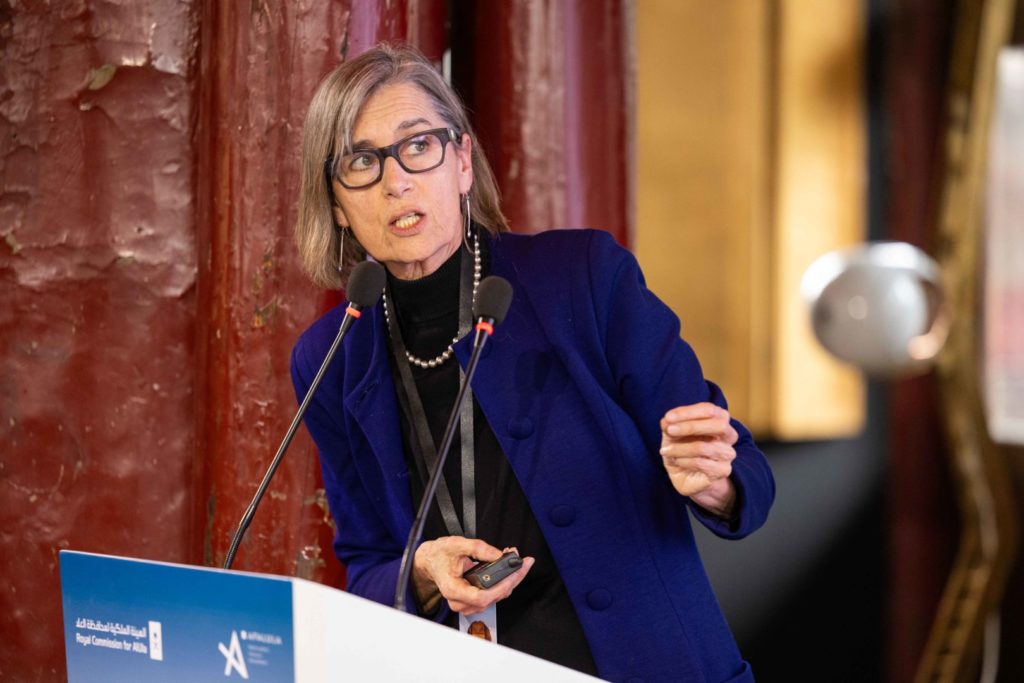
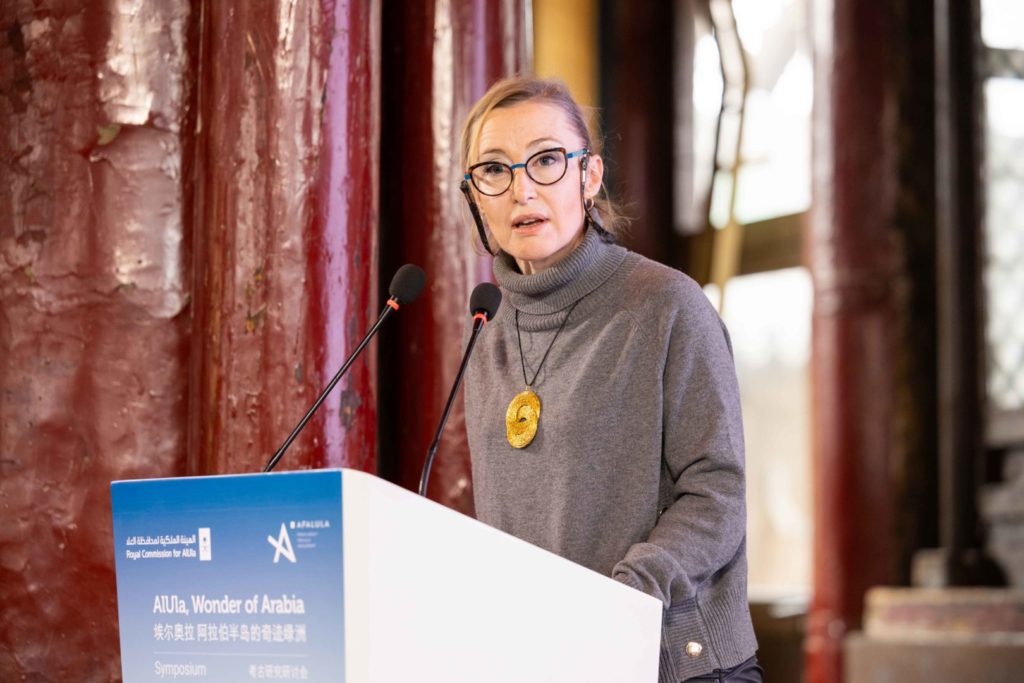
Dr. Ingrid Périssé-Valéro (French)
Director of Archaeology and Heritage, French Agency for the development of AlUla (AFALULA) since 2019.
Research Associate at the CNRS, UMR 5189: Histoire et Sources des Mondes Antiques.
Education and Professional Experience
- Ph.D. in Classical Archaeology and Art History, Bordeaux University, France.
- Master in Architecture and Heritage, School of Architecture and Marc Bloch University, Strasbourg, France.
- Master in Ancient History and Civilisations, Bordeaux University, France.
- 2014-2019: Director of the Department of Archaeology, Art History and Museum Studies, Sorbonne Abu Dhabi University ; Ass. Professor of Classical archaeology and Art History.
- 2017- : co-director of the Bisri Archaeological project, Lebanon, with Dr. W. Khalil.
- 2010-2011: Post-doctoral researcher, Clemens Heller – Fernand Braudel – IFER fellowship, German Archaeological Institute (DAI), Berlin, Germany.
- 2007-2009: Post-doctoral researcher, National Centre for Scientific Research (CNRS), UMR5189, Maison de l’Orient, Lyon, France.
- 2000-2014: Teacher of Archaeology, Art History, Ancient History and Heritage (Bordeaux University, Paris Est University, ICART Bordeaux)
- 1999- : Member of the Chhîm Archaeological Mission Lebanon. In charge of the excavation and study of the sanctuary (from Bronze Age to Byzantine period)
Publications (selection)
- Gandreau D., Sánchez Muñoz N, Périssé-Valéro I. & Morizet S., 2024, “AlUla Old Town: Interdisciplinary Approaches to Assess the Heritage Values of an Ancient Oasis City in Saudi Arabia”, Terra 2022, 497-502 (in press).
- Périssé-Valéro I., 2023, AlUla Old Town : an archaeological and heritage object”, in Nehmé L. & Alsuhaibani A. (Eds.), AlUla, Wonder of Arabia, Skira, 134-137.
- Margottini C., Spizzichino, Gallego J., Périssé-Valéro I. et al., 2023, “Rock slope instabilities affecting the AlUla archaeological sites (KSA)“, Progress in Landslide Research and Technology 2, Issue 2, 413–429.
- Périssé-Valéro I. & Alzahrani A. (Eds.), 2022, The 20th anniversary of Saudi-French archaeological cooperation (FR, AR, EN), Riyadh.
- Foote R., Guagnin M., Périssé-Valéro I. & Karacic S. (Eds), 2022, Revealing Cultural Landscapes in NorthWest Arabia, Supplement to Volume 51 of the Proceedings of the Seminar for Arabian Studies, 51–81.
Dr. Hussein Abu al-Hassan (Saudi)
DDNC CEO
Speech abstract
Preliminary fieldwork at Umm Daraj archaeological site, AlUla
The Umm Daraj site is one of the most prominent archaeological sites in AlUla Governorate. It is situated on the trade road that connects the southern Arabian Peninsula with the Levant, Mesopotamia, and Egypt. The site was located on the top of a mountain, opposite the archaeological site of Dadan. The preliminary field work at the site revealed the architectural remains of the Lahyanit temple and its annexes, in addition to numerous archaeological finds such as inscriptions, altars, incense burners, statues, and pottery sherds. The site’s history dates back to the period of the Kingdom of Lahyan between the 7th and 2d centuries BCE. This paper sheds light on the archaeological site of Um Daraj, along with its location, history, function, key elements, major findings and discoveries from the fieldwork conducted there.
Education and Professional Experience
- PH.D
- 2020-2021: Executive director for heritage in NEOM.
- 2017: consultant for HRH President, Saudi Commission for Tourism and National Heritage.
- 2013: Vice President for Antiquities and Museum in Saudi Commission for Tourism and National Heritage.
- 2012: Assistant Vice President for Antiquities and Museum in Saudi Commission for Tourism and National Heritage.
- 2006: consultant for Saudi Commission for Tourism and National Heritage.
- 2003: Consultant (part time) for Saudi Commission for Tourism and National Heritage.
- 2003: Assistant Professor College of Education, Riyadh.
- 1998: Editor of “Atlal” the journal of Saudi Arabian Antiquities and supervisor of scientific publications unit, Ministry of Antiquities and Museums.
- 1997: Supervisor at the Organization of Foreign Relations, Ministry of Antiquities and Museums.
- 1995: Acting as Antiquities and Museums Director in Madinah al Munawarrah.
- 1993: Lecturer in the College of Education at Madinah al Munawarrah.
Publications (selection)
- Abu al-Hassan H., 2019, “The mountaintop sanctuary of Umm Daraj”, in: ALULA wonders of Arabia, Institut du Monde Arabe, Gallimard, 68-69.
- Abu al-Hassan H., 2005, “Al-Mamalik al Arabia al Mubakkara: Amoun, Mowab, Adum. Al-Kitab al Marja’a fir Tarik halo”, Umma al-Arabia, Al-Mujjalad Awal, Arab Organization for Education, culture and science, Tunis.
- Abu al-Hassan H., 2005, “New Minean inscription from Al-Ula”, Adumatu 12.
- Abu al-Hassan H., 2001, “Preliminary report on the archaeological survey of Umm Daraj”, Atlal.
- Abu al-Hassan H., 1997, Qara’t L kitabat Lihyaniya min Jabl Ukma bi Muntiqa al Ula, King Fahd National Library, Riyadh.
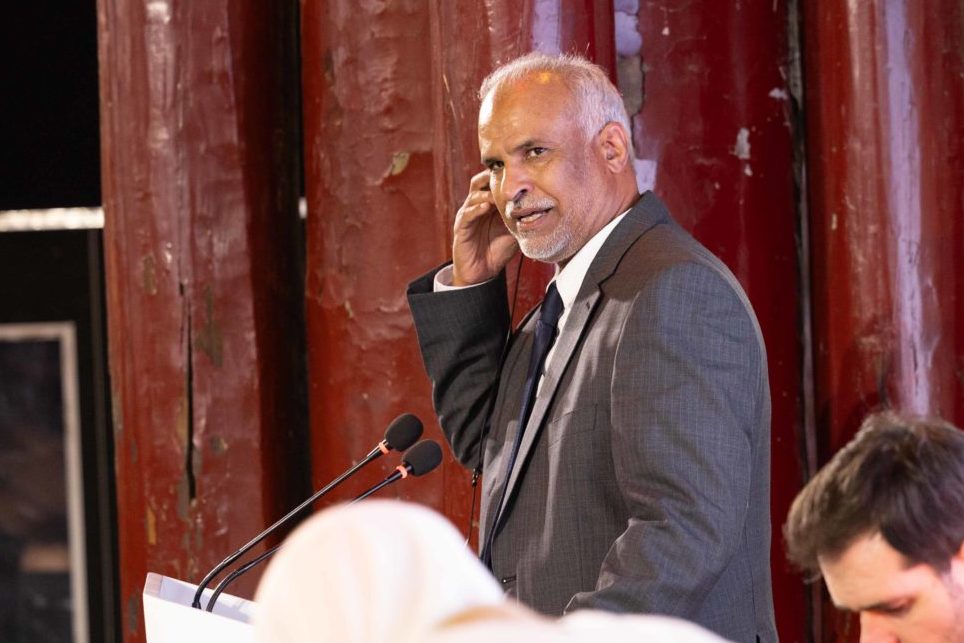
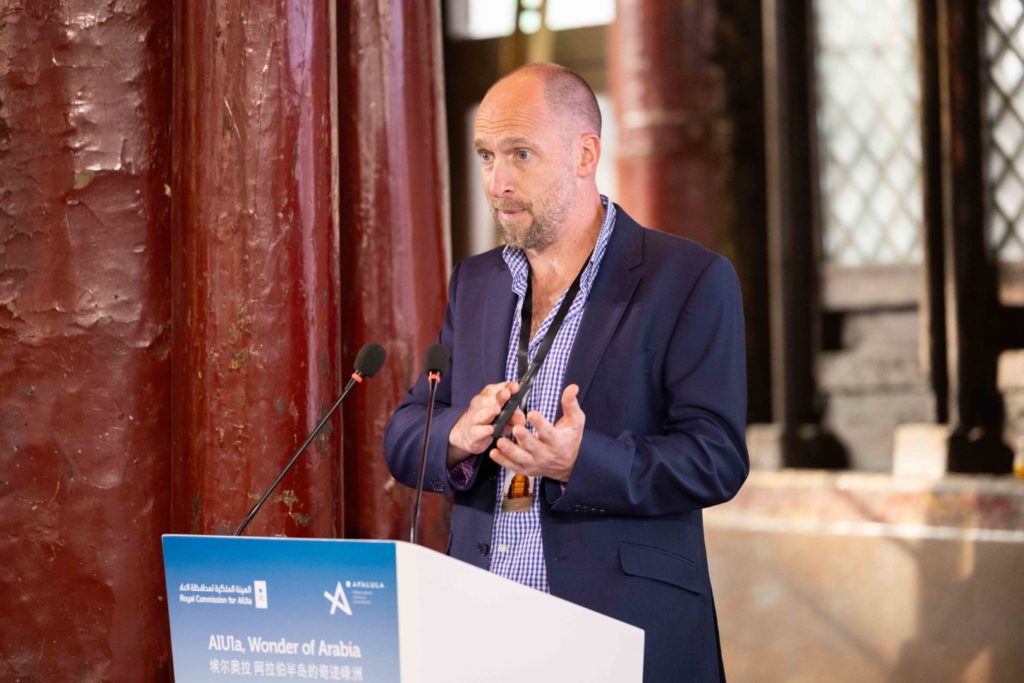
Mr Jan Freedman (British)
Geologist, Wildlife and Natural Heritage, Royal Commission for AlUla, KSA. Carry out research exploring new geological formations, develop procedures to protect the geoheritage, and communicate about the geology narrative to our local and international visitors.
Speech abstract
A landscape that created civilizations
AlUla, Saudi Arabia has an incredibly rich heritage, spanning thousands of years. People have been traveling through the region for over a hundred thousand years, and many settled and built homes, and some even built cities here. Humans settled here because of the geology. This talk looks at the deep history of AlUla, spanning almost a billion years. It’s a story of ancient oceans, lost worlds, fiery volcanic lands, and hidden treasure. The rocks in AlUla gives us clues how the Earth has changed over hundreds of millions of years, and have created the very landscape we see today. A landscape that people for thousands of years have called home.
Education and Professional Experience
- Geology BSc (hons)
- Environmental Geology MSc
- Museum curator for over 16 years, including research (with a focus on cave palaeontology), caring for natural history collections, public engagement, student lectures, exhibition development, family friendly events.
Publications (selection)
- Freedman J. & Conway S., 2022, “A closed case. Safely displaying 1140 spirit preserved marine animals for a new permanent public gallery”, Journal of Natural Science Collections 10, 86-93.
- Freedman J., 2021, “Museum Collections: Importance as a research tool”, The International Encyclopedia of Anthropology, Callan H. (Ed). Available on internet: https://www.natsca.org/sites/default/files/publications/JoNSC-Vol10-Priyan_Seeman_and_Jose_2022.pdf)
- Freedman J. & Gelsthorpe D., 2021, « The rediscovered collection of Myotragus balearicus Bate, 1909 (Artiodactyla, Bovidae) at Manchester Museum.”, Journal of Natural Science Collections 8, 66-72.
- Freedman J., van Dorp L. & Brace S., 2018, “Destructive sampling natural science collections: An overview for museum professionals and researchers”, Journal of Natural Science Collections 5, 21-34.
- Freedman J., 2015, “William Buckland’s connections to the last surviving Pleistocene collections from Yealm Bridge Caverns, Devon”, The Geological Curator 10(4), 147-158.
Dr Guillaume Charloux (French)
Research Engineer, CNRS, UMR 8167 (permanent position).
Co-director of the Khaybar Longue Durée Archaeological Project with R. Crassard CNRS and M. AlMushawh, RCU (2020-).
Speech abstract
Life-Sized Sculptures of Camels and Equids in the Desert. The Camel Site Archaeological Project
The Camel Site, near Sakaka, is a monumental and enigmatic rock art site in northern Arabia with 20 life-sized reliefs of camels and equids. The carvings are unparalleled in the region, making an assessment of their age difficult. Moreover, erosion is advanced, and many reliefs have lost their entire surface, preserving only the three-dimensional shape of the body of the animals. All reliefs were exclusively carved with stone tools and radiocarbon dates obtained during archaeological excavations suggest that site was in use in the Neolithic period. Remarkably, the documentation of near-identical panels, produced and re-worked in a near-identical pattern but located hundreds of kilometres apart also provides the first direct evidence that individual engravers repeatedly crossed the Nafud desert to create these monumental representations.
Education and Professional Experience
- Ph.D. in archaeology, Sorbonne University, Paris.
- Since 2010: Project director of the Oasis of Desert Arabia Project, Ministry of Foreign Affairs.
- Since 2018 : Co-Director of the Camel Site archaeological project (Saudi Arabia, Jawf province), SCTH & CNRS, with Dr M. Guagnin (Max Planck Institute) & Dr. A. AlSharekh (KSU).
- Since 2017: Co-Director of the Al-Bad‘ (ancient Madian) archaeological project (Saudi Arabia, Tabuk province), SCTH & CNRS, with Dr. S. Sahlah (KSU, Riyadh).
- 2014 – 2017: Field Director, Temple of Ptah in Karnak (Egypt), Cfeetk, Karnak, Egypt.
- 2010 – 2017: Co-Director of the Saudi-Italian-French Archaeological Project in Dûmat al-Jandal (Saudi Arabia), SCTH, University L’Orientale of Naples & CNRS, with Dr. R. Loreto (Naples University)
Publications (selection)
- Charloux G., Sahlah S.A. & Badaiwi W.A., 2021, “Madian revealed? Assessing the history and archaeology of the oasis of al-Badʿ in north-western Arabia”, Semitica & Classica 14, 97-141.
- Guagnin M., Charloux G. & AlSharekh A., 2021, “Life-sized Neolithic camel sculptures in Arabia: A scientific assessment of the craftsmanship and age of the Camel Site reliefs”, Journal of Archaeological Science: Reports 2021. https://doi.org/10.1016/j.jasrep.2021.103165
- Charloux G., AlMalki T. & AlQaeed A., 2021, “The “walled oases” phenomenon. A study of the ramparts in Dūmat al-Jandal and other pre-Islamic sites in north-western Arabia”, Arabian Archaeology and Epigraphy. https://doi.org/10.1111/aae.12177
- Charloux G., Ali Abady Mahmoud M., ElNasseh A.S., Marchand S. & Mégard P., 2021, “The shifting Nile and the origins and development of ancient Karnak”, Antiquity 95 (382), 919-939. https://doi.org/10.15184/aqy.2021.73
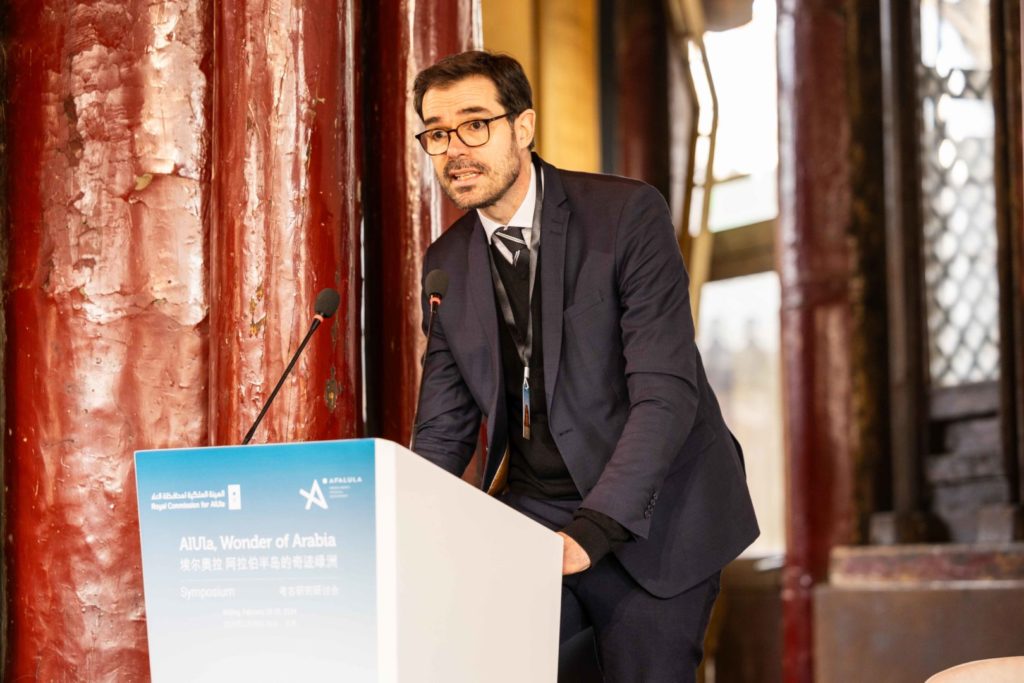
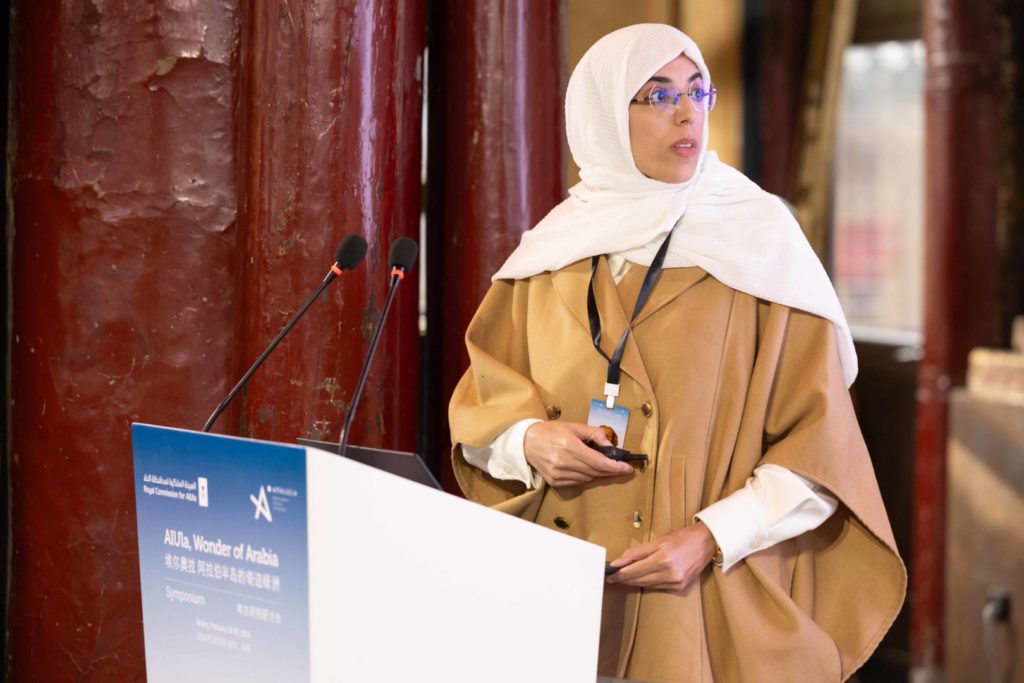
Dr. Munirah AlMushawh (Saudi)
Since 2022: Archaeology Survey Manager, Department of Archaeology, Conservation and Collections, Royal Commission for AlUla
Co-Director of Khaybar Longue Durée Archaeological project with Dr. G. Charloux and Dr. R. Crassard (CNRS)
Speech abstract
Khaybar, a land of complex legacies from prehistory to modern time
The Khaybar oasis is a major cultural landscape in the Hijaz that has been shaped over thousands of years by human occupation. It lies on the edge of a large lava field Ḥarrāt Khaybar in north-west Saudi Arabia and combines unique geology, rich archaeology, and spectacular traditional heritage. The oasis is now under the study of a multidisciplinary Saudi-French project, the Khaybar Longue Durée Archaeological Project (2020–2024), supported by the Royal Commission for AlUla (RCU), the French Agency for AlUla Development (AFALULA), and the French National Centre for Scientific Research (CNRS). The initial findings comprise the identification of local desert kites, the discovery of a long pre-Islamic rampart and new pre-Islamic sites, and brings to light new information on the Islamic occupation as well as a significant archive of petroglyphs and inscriptions. Human presence seems to have been continuous from the earliest prehistoric times to the birth of Islam and beyond.
Education and Professional Experience
- PhD – Prehistoric Archaeology in Arabia, King Saud University, Riyadh, KSA, recipient of the King Saud University Award for Scientific Excellence 2019.
- Master’s degree in Archaeology and Museology at King Saud University.
- oversees archaeological research and data interpretation while leading various educational outreach programs.
- First Saudi female archaeologist to co-direct an archaeological project in Saudi Arabia.
- Compiling Data and Drafting UNESCO Nomination dossier proposals, including Jabal Ikmah site, AlUla, inscribed in UNESCO’s Memory of the World International Register in 2023.
Publications (selection)
- Charloux G., Shabo S., Chung-To G., Depreux B., Guermont F., Guadagnini, K. & AlMushawh M., 2024, “The ramparts of Khaybar. Multiproxy investigation for reconstructing a Bronze Age walled oasis in Northwest Arabia”, Journal of Archaeological Science: Reports, 104-355.
- AlMushawh M., AlAhmari S., AlShammery S. & AlRemaily A., 2023, “New Insights into the Archaeological Record at Jabal Ikmah in AlUla Oasis”, Studies in History and Civilization of Arabia 1 (1), 1-39.
- Charloux G., Crassard R., AlMushawh M. et al.,2023, The Khaybar Longue Durée Archaeological Project, Year 1 (2020-2021, Seasons One and Two, ATLAL, Riyad.
- AlMushawh M., 2021, “Pisces, a Zodiac sign engraved on a Nabataean tomb façade in Hegra”, BAR Publishing- International Archaeological Reports, S3033, 13, 59-100.
- AlMushawh M., 2018, “An Archaeoastronomical Approach to the Megalithic Sites of Saudi Arabia”, Mediterranean Archaeology and Archaeometry 18 (4), 1-9. Available on internet: http://maajournal.com/Issues/2018/Vol18-4/1_Almushawh%2018(4)
- Charloux, G., Crassard R., AlMushawh M., Albukaai D., Chung-To G., Depreux B. & Alshilali S., 2022, “Khaybar through time. First results of the Khaybar Longue Durée Archaeological Project (2020− 2021) in the light of historical sources”, In: Proceedings of the Seminar for Arabian Studies 51, 57-84, Archaeopress.
Prof. Solaiman Abdulrahman Al-Theeb (Saudi)
2012 – present: Cultural Advisor – King Faisal Center Research and Islamic studies.
2017 – present: Advisor to the Royal Commission for AlUla.
2019 – present: Professor- Department archaeology of the Arabian Peninsula- College of Archelogy & Tourism- Misr University for Science & Technology.
2020 – present: Heritage Board Member.
Speech abstract
The Ancient writings of AlUla Province
The lecture entitled ‘The Ancient Writings of AlUla Province will shed light on the writings and inscriptions found in Al-Ula, some of which were originally written in the Arabian Peninsula while others were from outside the Peninsula that were written in Greek or Latin, mostly found in Al-Hijr site. It will also briefly highlight the results of the Royal Commission for AlUla survey that took place in recent years, which recorded many ancient Arabic inscriptions dating back to the period between the 8th century BCE to the 10th century AD, in addition to contemporary Arabic and foreign writings.
Education and Professional Experience
- PhD
- Editor – In- Chief: Studies in the History and civilization of Arabia, (SHCA).
- Professor: 1997
- Associate Professor: 1993-1997
- Assistant Professor: 1989- 1993
Publications (selection)
- “Inscriptions from AlUla region: a chronology”, In: AlUla: wonder of Arabia, Paris: Institut du monde arabe, 2019, pp. 78- 81.
- “Evolution of the Ḥāʾil Thamudic Inscriptions”, Abgadiyat, 2018, 46-56.
- “Nabataean Inscriptions from South West of Taymāʾ Saudi Arabia”, Note Arabian Epigraphy, 4, 2018, 107- 132.
- “A Nabataean Stela In Taymāʾ Museum”, in: A Pioneer of Arabia Studies in the archaeology and Epigraphy of the Levant and the Arabian Peninsula in the Honor of M. Ibrahim, Kafafi Z. and Maraqten M. (eds.), 2014, 40-44.
- “New Nabataean Inscriptions from Qyal، al-Jauf: Saudi Arabia”, JFA, 7, 1997, 125-45.
- Aramaic and Nabataean Inscriptions from North-West Saudi Arabia, Riyadh, King Fahd National Library Publications,1993.
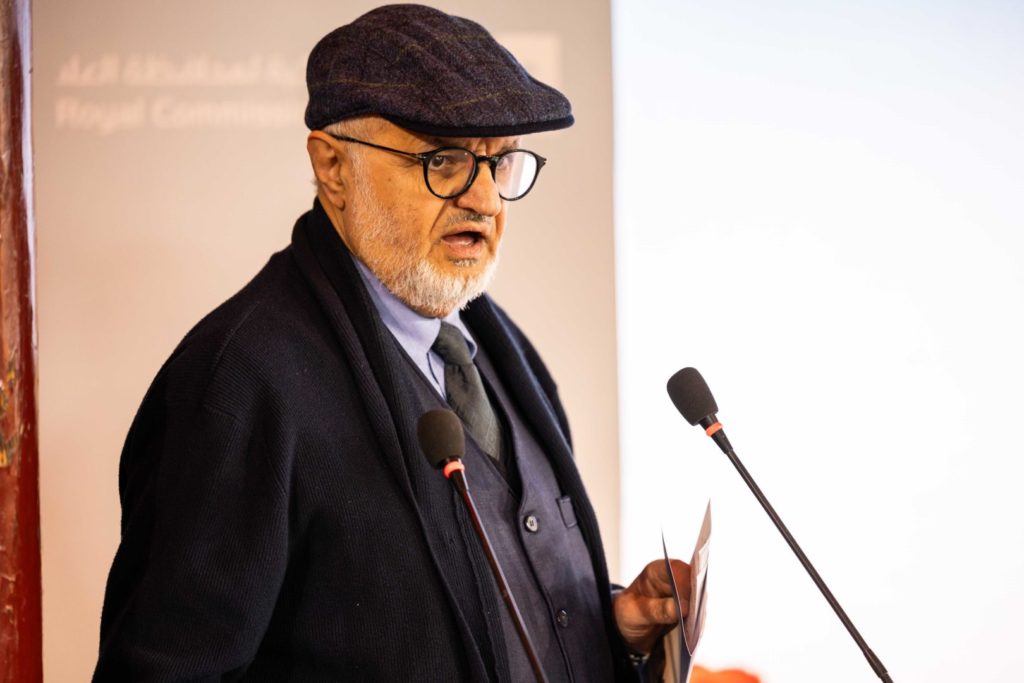
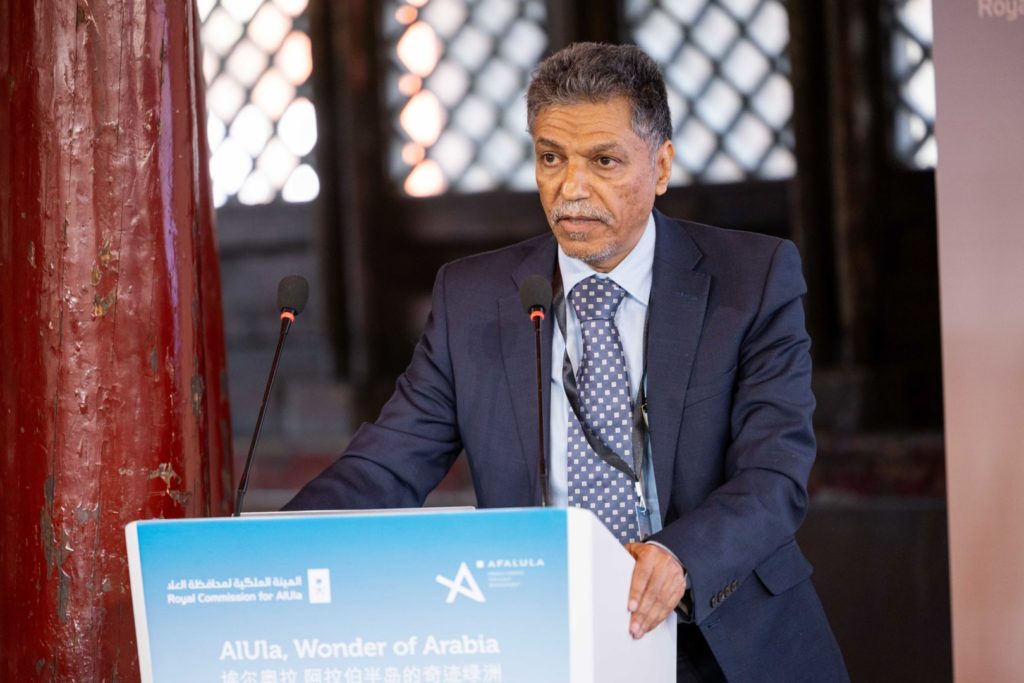
Dr Dhaifallah Al-Talhi (Saudi)
Honorary Associate Professor of Ancient Archeology, University of Hail
Speech abstract
Excavation of Hegra, a site on the World Heritage List
Hegra is an important archaeological site in the northwest of Saudi Arabia. It is part of the Nabataean Kingdom, which flourished from the 4th century BCE to the 2d century AD. The main archaeological features of the site are: the monumental tombs, the settlement area and the sacred area (Ithlib Mountains). This lecture will highlight the most important discoveries in the necropolis and the settlement area and show how the excavations have expanded our knowledge of the site.
Education and Professional Experience
- PhD in Archaeology, University of Southampton, UK, 2000.
- 2017: Dean of the faculty of arts at Hail University.
- 2014: Head of the Department of antiquities and tourism at Hail University.
- 1997: Director General of the Center for Archaeological Research and Excavations.
- 1994: Appointed Secretary of the Supreme Council of Antiquities.
Publications (selection)
- Al-Talhi D., 2023, Pre- Islamic antiquities of Saudi Arabia, Riyadh.
- Al-Talhi D. & Fayyad S., 2022, Rock art in Al-Malihiyah, Hail.
- Al-Talhi D. & Al-Daire M., 2005, “Roman Presence in the Desert: A new Inscription from Hegra”, CHIRON 33, 205-217.
- Al-Talhi D., 2002, “A Model of the Nabataean Dwelling from Mada’in Salih”, Adumato 10.
- Al-Talhi D., 2023, Pre- Islamic antiquities of Saudi Arabia, Riyadh.
- Al-Talhi D. & Fayyad S., 2022, Rock art in Al-Malihiyah, Hail.
- Al-Talhi D. & Al-Daire M., 2005, “Roman Presence in the Desert: A new Inscription from Hegra”, CHIRON 33, 205-217.
- Al-Talhi D., 2002, “A Model of the Nabataean Dwelling from Mada’in Salih”, Adumato 10.
- Al-Talhi D., 1985, “The first season of the excavation of the Mabiyat site, an early Islamic site in the north of the Hijaz”, ATLAL 9.
Mr. Mohammed Almalki (Saudi)
Underwater excavations team leader, Heritage Commission, Ministry of Culture, KSA
Codirector of the Farasan archaeological project
Speech abstract
The Saudi-French Archaeological Project in the Farasân Islands: Unveiling the past of the Red Sea
The Farasan Islands, the largest archipelago in the Red Sea, ca 50 km off the Saudi coast, have abundant freshwater and fish, gazelles, many spots of excellent arable land, and naturally protected harbours: a good place for settlement since Prehistory, a crossing point between South Arabia and Ethiopia and between the Northern Red Sea and the Indian Ocean. In addition to intensive surveying, the Saudi-French team led systematic excavations on three sites initiated in 2014: Wadi Shami (cemeteries and settlement of Late Antiquity and Early Islam), Wadi Matar 2 (settlement and sanctuary, Early South Arabian and Roman / Himyaritic), and since 2021 Qusar (Roman and post-Roman; Modern). The discoveries at Qusar, the southernmost post of Roman Empire, with a military camp and Latin inscriptions, are exceptional.
Education and Professional Experience
- Master
- Field survey and archaeological excavations (Qurayyat, Farasān, Bani Malik…)
Publications (selection)
- Archaeological reports on excavations on Farasan Island, Qurayyat, and archaeological survey work on heritage and archaeological sites in Al-Dayer Bani Malik Governorate.
- Archaeological reports on archaeological excavations on Farasan Island, and archaeological survey work on heritage and archaeological sites in Al-Dayer Bani Malik Governorate.
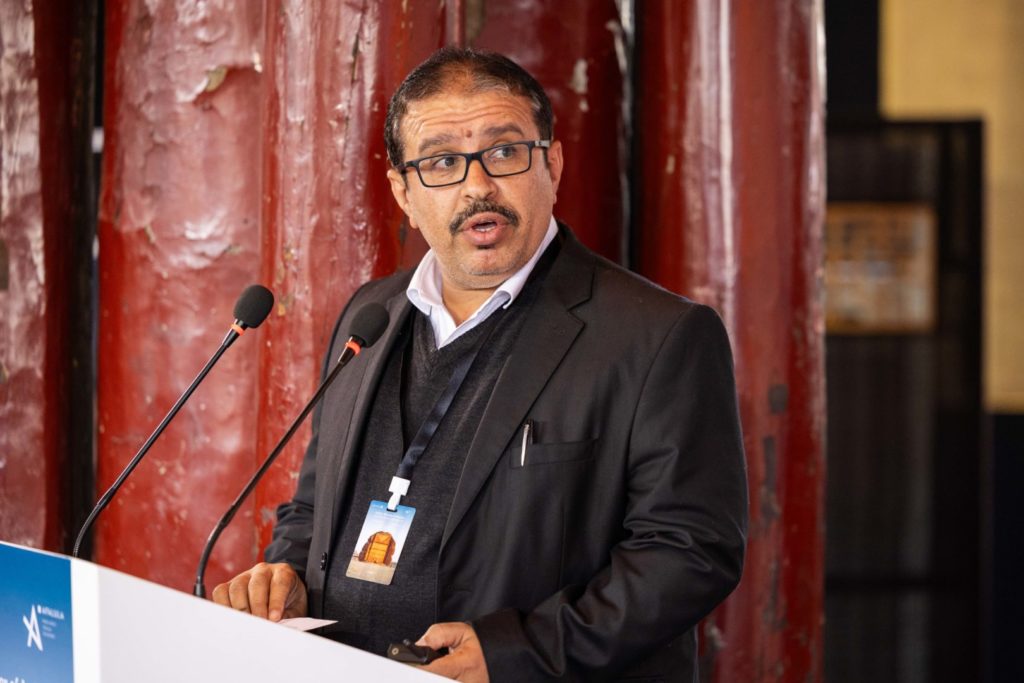
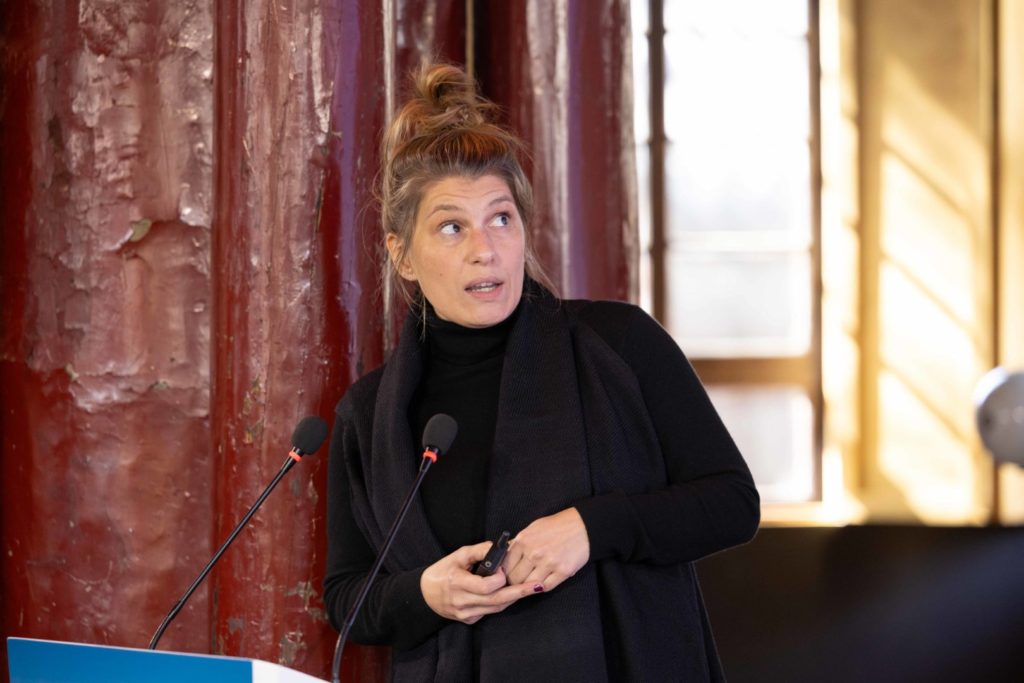
Katharina Kuntz Ma (German)
Scientific Project Team Member of the German Archaeological Institute
Project: Qurh Conservation and Archaeological Project (QCAP) à Principal Investigator for the research aspect « Conservation »
Speech abstract
Urban Archaeological Research and Conservation Approaches for the Archaeological Site of Qurh (Dr. K. Kuntz & Dr. Ing. U. Siegl)
The site of al-Mabiyat, identified as the ancient Qurh, lies approximately 19 km southeast of modern al-Ula (Medina Province, Saudi Arabia). The site is known from historical sources and said to be one of the most important cities of the Early to Middle Islamic period (7th –12th centuries AD). In 2022 a new interdisciplinary project involving conservation, survey and archaeological excavations has been launched by the Orient Department of the DAI under the auspices of the Royal Commission for AlUla (RCU). The paper discusses the preliminary results of the first three seasons (2022-2023). New insights into the urban layout and the spatial-functional organization of the city of Qurh were gained by using a combination of methods from archaeological investigations, geophysical prospections and remote sensing techniques. In addition, different features were recorded in the surrounding of the settlement giving information about the environment setting and a water management system. The project’s conservation aspect developed and implemented sustainable treatments for the site and its archaeological heritage. The challenging nature of the site´s earthen architecture together with a problematic impact of surface runoff required the establishment of conservation strategies allowing future research, science communication and touristic infrastructure.
Education and Professional Experience
- BA: Archaeological and cultural heritage conservation (FH Erfurt, Germany)
- MA: Archaeological and cultural heritage conservation (HTW Berlin, Germany)
- PhD (ongoing): West Asian Archaeology (FU Berlin, Germany) à Interdisciplinary research on the technology, production and provenance of Islamic ceramics from Takht-e Soleyman, Iran
- German Archaeological Institute, Berlin: developing and implementing sustainable conservation strategies and concepts for interdisciplinary research projects in Saudi Arabia and Iraq
- University of Applied Sciences, Berlin: teaching assignments focusing on Conservation of Archaeological Heritage, Preventive Conservation and Conservation Management
- Museums in Germany, UK and Canada: collaborating with conservation and collection departments
Publications (selection)
- Röhrs, S., Dumazet, A., Kuntz, K., Franke, U. (2022): Bodies and Glazes of Architectural Ceramics from the Ilkhanid Period at Takht-e Soleyman (North-Western Iran), Minerals, 12(2), 158-174
- Kuntz, K., Jurgasch, J., Hausleiter, A. und Lindlar, G. (2021): Tayma, Saudi-Arabien. Bauwerkserhaltung. Die Arbeiten des Jahres 2018, e-Forschungsberichte des DAI, 1–18
- (in prep.) Kuntz, K., Alloteau, F.: The 12th / 13th Century CE Incised & Glazed Pottery from Takht-e Soleyman, Iran – Insights into Dark-Coloured Clay Layers
- (in prep.) Kuntz, K.: Glazed Ceramics from the Islamic occupation at Takht-e Soleyman. Materials, Techniques and Production, in: U. Franke & Y. Hassanzadeh, Takht-e Soleyman – New Perspectives from Old Excavations
Dr.-Ing. Ulrike Siegel (German)
Scientific Project Team Member of the German Archaeological Institute.
Project: Qurh Conservation and Archaeological Project (QCAP). Principal Investigator for the research aspect “urban archaeology”.
Speech abstract
Urban Archaeological Research and Conservation Approaches for the Archaeological Site of Qurh (Dr. K. Kuntz & Dr. Ing. U. Siegl)
The site of al-Mabiyat, identified as the ancient Qurh, lies approximately 19 km southeast of modern al-Ula (Medina Province, Saudi Arabia). The site is known from historical sources and said to be one of the most important cities of the Early to Middle Islamic period (7th –12th centuries AD). In 2022 a new interdisciplinary project involving conservation, survey and archaeological excavations has been launched by the Orient Department of the DAI under the auspices of the Royal Commission for AlUla (RCU). The paper discusses the preliminary results of the first three seasons (2022-2023). New insights into the urban layout and the spatial-functional organization of the city of Qurh were gained by using a combination of methods from archaeological investigations, geophysical prospections and remote sensing techniques. In addition, different features were recorded in the surrounding of the settlement giving information about the environment setting and a water management system. The project’s conservation aspect developed and implemented sustainable treatments for the site and its archaeological heritage. The challenging nature of the site´s earthen architecture together with a problematic impact of surface runoff required the establishment of conservation strategies allowing future research, science communication and touristic infrastructure.
Education and Professional Experience
- 2000: Diploma degree (Dipl.-Ing.) in Architecture, Technical University Dresden (Germany).
- 2002: Master degree in the Postgraduate Studies “Preservation of Monuments”, Technical University Berlin (Germany).
- 2012: Ph.D. in Building Archaeology, Department of Historical Buildings Research and Postgraduate Studies in Preservation of Monuments, Technical University of Berlin (Germany). Thesis on the residence of the caliph Hārūn ar-Rašīd in ar-Raqqa/ar-Rāfiqa (Syria).
- Specialist in building archaeology and heritage conservation.
- German Archaeological Institute, Berlin:
- – since 2006: Researcher in several archaeological and rehabilitation projects in Syria (Damascus, Raqqa, Resafa), Jordan (Hujayrat al-Ghuzlan), Iraq (Erbil, Hira, Uruk) and Saudi Arabia (Al-Ula).
- – 2015 – 2022: Co-project manager of the capacity building program “Iraqi-German Expert Forum on Cultural Heritage (IGEF-CH)”.
- – since 2022: researcher (PI) in the Qurh Conservation and Archaeological Project (QCAP).
- Research interests: Early Islamic architecture and urban planning, Chalcolithic architecture, methods of archaeological prospection and building research, site management.
Publications (selection)
- Siegel U. and van Ess M., 2022, Erhalt des archäologischen und historischen Architekturerbes 1. Studienprojekte Irak (deutsche Version), Berlin.
- Siegel U., 2021, “Langfristiger Schutz durch Wiederverfüllung. Das Site Management Projekt Tall Hujayrāt al-Ghuzlān (Jordanien)”, in: Bührig C. et al. (eds), Klänge der Archäologie. Festschrift für Ricardo Eichmann, Wiesbaden, 431–440.
- Siegel U., 2017, Die Residenz des Kalifen Hārūn ar-Rašīd in ar-Raqqa/ar-Rāfiqa (Syrien), Raqqa 4, Berlin.
- Rhodius Ch., Kadereit A., Siegel U., Schmidt K., Eichmann R. & Khalil L., 2015, “Constraining the time of construction of the irrigation system of Tell Hujayrat al-Ghuzlan near Aqaba, Jordan, using high-resolution optically stimulated luminescence (HR-OSL) dating”, Archaeological and Anthropological Sciences. Available on internet: 10.1007/s12520-015-0284-x (‘Online First’ article).
- Notroff J., Schmidt K., Siegel U. and Khalil L., “Reconstructing networks, linking spaces – the view from the Aqaba region (Jordan)”, Levant 46/2, 2014, 249–267.
- Siegel U., “Hydrological Structures in the Wādi al-Yutum Fan in the Vicinity of Tall Hujayrāt al-Ghuzlān”, in: Khalil L. and Schmidt K. (eds.), Prehistoric Aqaba I, Orient-Archäologie 23, 2009, 273-294.
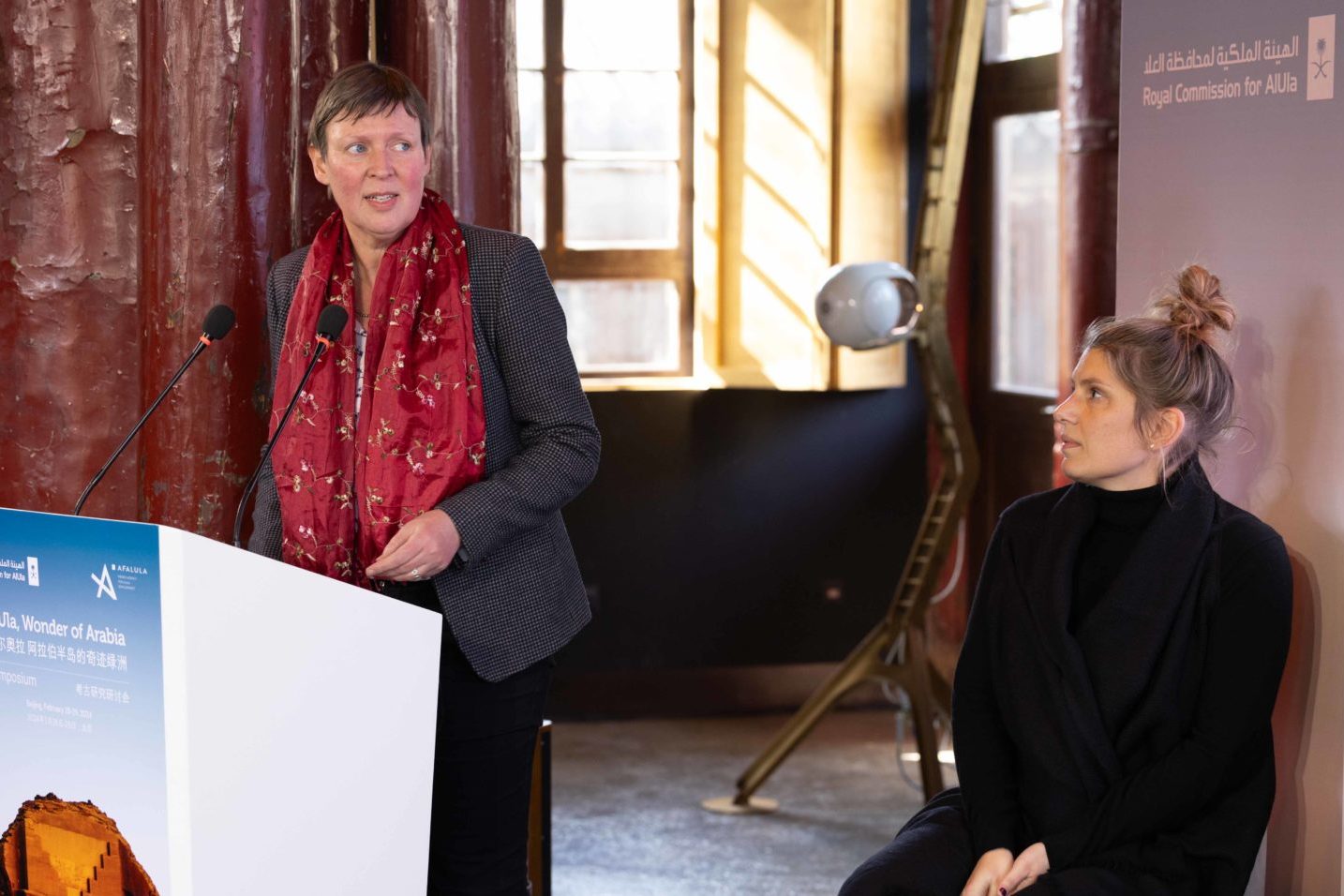
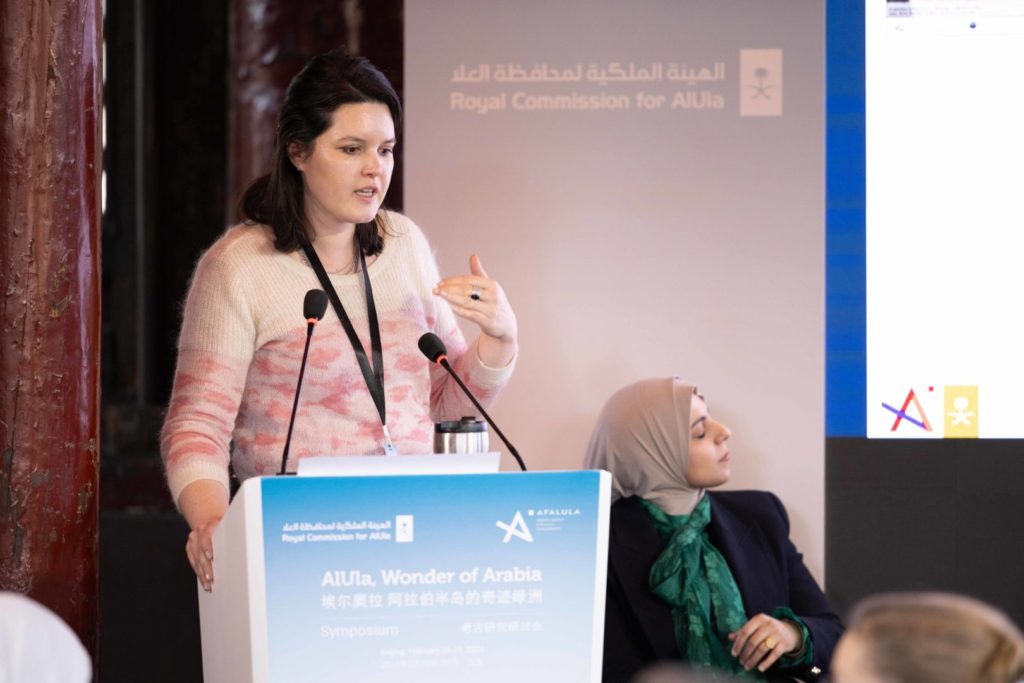
Dr Apolline Vernet (French)
Co-director of Multiscalar Documentation for Urban Dynamics (MuDUD), Archaïos with A. Almudara (King Saud University)
Speech abstract
AlUla Old Town : Discovering the vernacular architecture and past urban lives through archaeology (Dr. Apolline Vernet & A. Almudara)
AlUla Old Town is the most recent heritage asset of the valley, as it has been abandoned during the 1980s. The research conducted by the MuDUD project and steered by AFALULA on behalf of RCU, sheds new light on the everyday lives in this urban site before its abandonment through the collection of material culture and former inhabitant’s testimonies. In parallel, the archaeological investigations conducted there allows us to uncover the settlements preexisting the actual Old Town, and to understand the occupation strategies with the help of spatial studies. The multidisciplinary approach of the MuDUD project allows to have a global comprehension of the urban lives in the AlUla Old Town.
Education and Professional Experience
- PhD in Archaeology
- Director of archaeological project
- Teacher in Islamic archaeology
Publications (selection)
- Gilento P., Pesce G. & Vernet A., 2024, “Radiocarbon Dating of Earth Mortars from AlUla Old Town (Saudi Arabia). An Integrated Approach of Building Archaeology, Mortar Analysis and Radiometric dating”, RadioCarbon ( in press).
- Canaud H. & Vernet A., 2024, “Behind the camera, photographic approaches through the archives fond of AlUla Old Town”, PSAS (in press).
- Bonnal, M., Caciagli P., Camargo-Mendez G., Torre Guibert M. & Vernet A., 2024, “Research on traditional architecture of AlUla Old Town (Saudi Arabia) — Methodology and preliminary results”, Proceedings ICAANE, 2024 (in press).
Mrs Aljohara Almudara (Saudi)
Co-director of Multiscalar Documentation for Urban Dynamics (MuDUD), Archaïos, with Dr. A. Vernet
Speech abstract
AlUla Old Town : Discovering the vernacular architecture and past urban lives through archaeology (Dr. Apolline Vernet & A. Almudara)
AlUla Old Town is the most recent heritage asset of the valley, as it has been abandoned during the 1980s. The research conducted by the MuDUD project and steered by AFALULA on behalf of RCU, sheds new light on the everyday lives in this urban site before its abandonment through the collection of material culture and former inhabitant’s testimonies. In parallel, the archaeological investigations conducted there allows us to uncover the settlements preexisting the actual Old Town, and to understand the occupation strategies with the help of spatial studies. The multidisciplinary approach of the MuDUD project allows to have a global comprehension of the urban lives in the AlUla Old Town.
Education and Professional Experience
- PHD student in Archaeology, King Saud University, Riyad
- Islamic architecture
- Building Archaeological
Publications (selection)
- Almudara A., 2022, “ALUla Old Town, How to Define a Traditional Urban Landscape in Wadi AlQura”, 55th Seminar for Arabian Studies, Berlin, 5th-7th August 2022, Humboldt Universitat ((Poster).
- Almudara A., 2016, “Document of the Governor of Al-Ahsa Muhammad Pasha of Al-Fateh Mosque (AlDebs) in Al-Ahsa in Al-Kut District”, in: The Annual Scientific Meeting Book Entitled: Countries Of the Cooperation Council for the Arab Gulf States through the Ages, Issue 18.
- Almudara A., 2018, “Analysis Of The Architectural Plan Of Ottoman Mosques In Alahsa Kut, Kingdom Of Saudi Arabia In The 10th Century Ah / 16, (Mosque Of Alfatih (Aldibs), Mosque Of Alqouba)”, in: The Architectural Heritage Magazine issued by the Wessex Institute in Britain in 2018, the International Journal of Heritage Architecture, studies, repairs and maintenance.
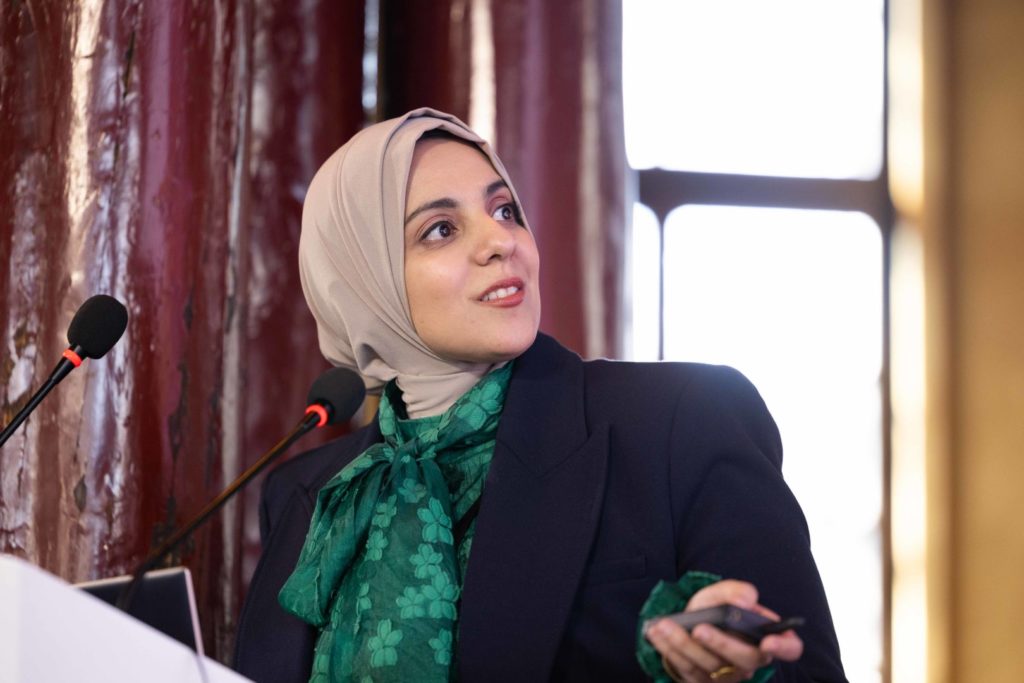
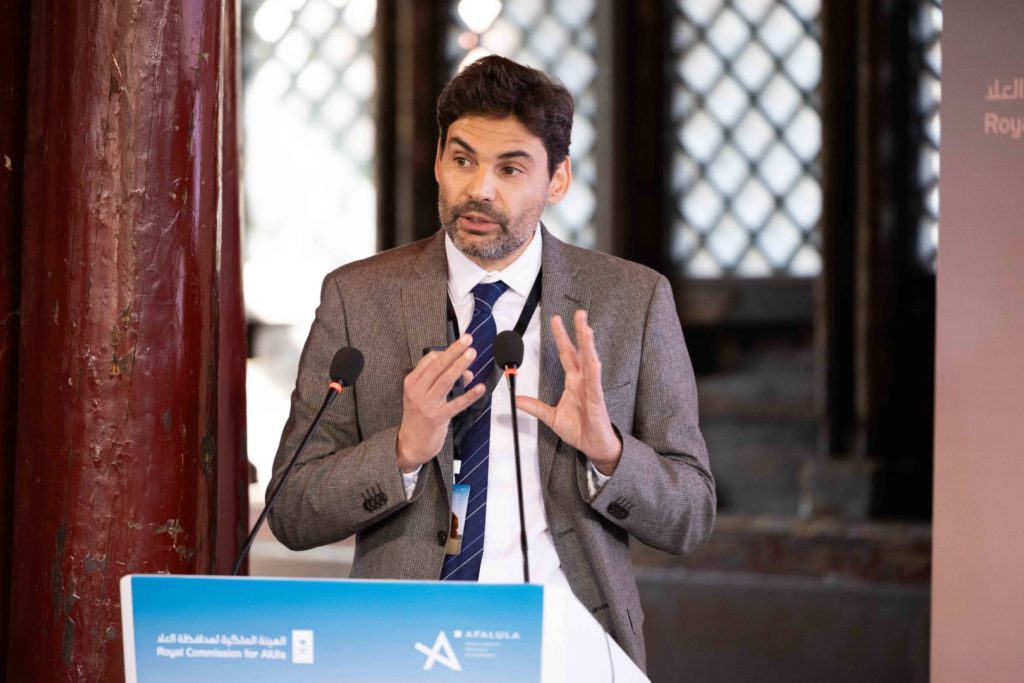
Dr Julien Charbonnier (French)
Director of Al-Ula Cultural Oasis Project (UCOP), Archaïos
Speech abstract
Reconstructing the history of AlUla oasis (kingdom of Saudi Arabia): first insights from the AlUla Cultural Oasis Project (2019-2023)
Funded and steered by the French Agency for AlUla Development (AFALULA), on behalf of the Royal Commission for AlUla (RCU), the AlUla Cultural Oasis Project (UCOP), carried out by Archaïos, aims at understanding the history of this well-known oasis located in the northern Hejaz region (Kingdom of Saudi Arabia). The project’s multidisciplinary methodology combines a systematic pedestrian survey of past and present cultivated spaces with detailed studies of water systems, vernacular architecture and archaeological material, as well as the photo-interpretation of archive imagery and spatial analyses at different scales. In this presentation, we aim at filling the gaps in our knowledge of the understudied Islamic and pre-modern Arabian oases, by providing an analysis of AlUla oasis’ spatial organization, as well as proposing preliminary hypotheses regarding its spatial development during the last 1000 years.
Education and Professional Experience
- PhD in Oriental Archaeology, Paris 1 Panthéon-Sorbonne University. Title: “Irrigation systems in the Arabian Peninsula before Islam (4th millennium B.C. to mid-1st millennium A.D.”
- 2017-2018: Post-doctoral researcher, Centre National de la Recherche Scientifique (CNRS)
- 2015-2016: Post-doctoral researcher, Clemens Heller – Fernand Braudel – IFER fellowship, Freie Universität – Excellence Cluster TOPOI, Berlin (Germany).
- 2012-2014: Post-doctoral researcher, Fyssen Foundation fellowship. Durham University (UK).
Publications (selection)
- Charbonnier J., Kanhoush Y., Gravier J. & al., 2022, “Mapping an Arabian oasis: first results of the UCOP systematic survey of alʿUlā (AlUla) Valley (2019–2021)”, in: Foote R., Guagnin M., Périssé I. & Karacic S. (Eds.), Revealing Cultural Landscapes in NorthWest Arabia, Supplement to Volume 51 of the Proceedings of the Seminar for Arabian Studies, Archaeopress, Oxford, 51–81.
- Charbonnier J., Crépy M., Régagnon E., Calastrenc C., Sagory T., Benoist A. &Purdue L., 2020, « Exploitation of groundwater in the oasis of Masāfī (UAE): A diachronic perspective”, Arabian archaeology and epigraphy 31, 478–500. Available on internet: https://doi.org/10.1111/aae.12168
- Purdue L., Charbonnier J., Régagnon E., Calastrenc C., Sagory T., Virmoux C., Crépy M., Costa S. & Benoist A., 2019, “Geoarchaeology of Holocene oasis formation, hydro-agricultural management and climate change in Masafi, southeast Arabia (UAE)”, Quaternary Research 92, 109–132. Available on internet: https://doi.org/10.1017/qua.2018.142
- Charbonnier, J., 2015. Groundwater management in Southeast Arabia from the Bronze Age to the Iron Age: a critical reassessment. Water Hist 7, 39–71. https://doi.org/10.1007/s12685-014-0110-x
- Charbonnier J., Purdue L. & Benoist A., 2017, “Taming Surface Water in Pre-Islamic Southeast Arabia: Archaeological, Geoarchaeological, and Chronological Evidence of Runoff Water Channeling in Masāfī (UAE)”, Journal of Field Archaeology 42, 13–28. Available on internet: https://doi.org/10.1080/00934690.2016.1256172
Mr. Waleed Zain alabdeen Fenetyanh (Saudi)
Underwater Exploration Senior Specialist, Ministry of Culture – Heritage Commission
Member of the Committee concerned with the protection of underwater cultural heritage in accordance with the United Nations Educational and Cultural Organization (UNESCO) Convention
Speech abstract
The efforts of the Heritage Authority in exploring underwater cultural heritage (Waleed Fenetyanh & Yang Rui)
This paper will present an overview of the Kingdom of Saudi Arabia’s interest in underwater cultural heritage. The Ministry of Culture’s signing of the UNESCO Convention 2001 and the Heritage Commission’s mandate to establish a center for underwater cultural heritage aimed at implementing scientific studies and research on underwater archaeology, and promoting the need to preserve archaeological standards with a focus on protecting them, awareness and education about it. We will review the international mission projects in research and exploration of underwater cultural heritage on the Red Sea coast, and cooperation agreements with universities and centers specialized in underwater antiquities. Particular focus will be placed on the most prominent research and excavations carried out using modern technologies, especially the use of sonar techniques and the application of various programs.
Education and Professional Experience
- Bachelor in Mass Communication
- Dive Master
- Work in maritime archaeology
- Diving skills Development Officer, Underwater Cultural Heritage Expoloration Team
Publications (selection)
- Archaeological report on Lake Al-Mandif, near the archaeological village of Al-Faw in cooperation with (KAUST)
- Excavation report on a Shipwrecks in the Thuwal area, north of Jeddah, in cooperation with King Abdullah University of Science and Technology (KAUST)
- Archaeological survey report on Underwater cultural heritage, first phase in cooperation with (NEOM).

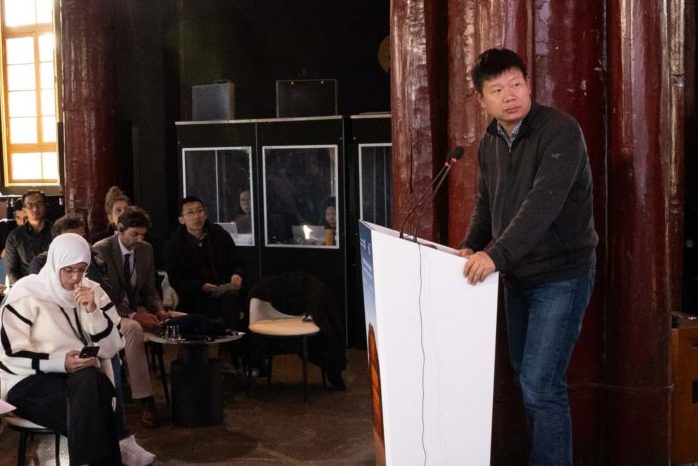
Mr. Yang Rui (Chinese)
Associate Researcher
Speech abstract
The efforts of the Heritage Authority in exploring underwater cultural heritage (Waleed Fenetyanh & Yang Rui)
This paper will present an overview of the Kingdom of Saudi Arabia’s interest in underwater cultural heritage. The Ministry of Culture’s signing of the UNESCO Convention 2001 and the Heritage Commission’s mandate to establish a center for underwater cultural heritage aimed at implementing scientific studies and research on underwater archaeology, and promoting the need to preserve archaeological standards with a focus on protecting them, awareness and education about it. We will review the international mission projects in research and exploration of underwater cultural heritage on the Red Sea coast, and cooperation agreements with universities and centers specialized in underwater antiquities. Particular focus will be placed on the most prominent research and excavations carried out using modern technologies, especially the use of sonar techniques and the application of various programs.
Education and Professional Experience
- M.A. of Archaeology
- 2018-2019, participation to the cooperation project of Al-Serrian in Saudi.
- Excavations in China, such as the Nanhai No. 1 shipwreck, the Tuokuzisalai site.
- Archaeological surveys, such as Guangdong, Hainan, Shandong, and Zhejiang provinces.
Publications (selection)
- Yang R., 2020, “Archaeological Survey and Research on Ming and Qing Coastal Defense Remains in Rizhao Region”, Underwater Archaeology 2, Shanghai Ancient Books Publishing House.
- Yang R., 2018,”Chapter 7: Metal Artifacts”, in: The archaeological report “Excavation of the Nanhai No. 1 Shipwreck: 2014-2015, Cultural Relics Publishing House.
- Yang R., 2018, “A Study on Several Issues of the Southern Song Dynasty Shipwreck ‘Nanhai No. 1′”, Museum journal, 2nd issue.

